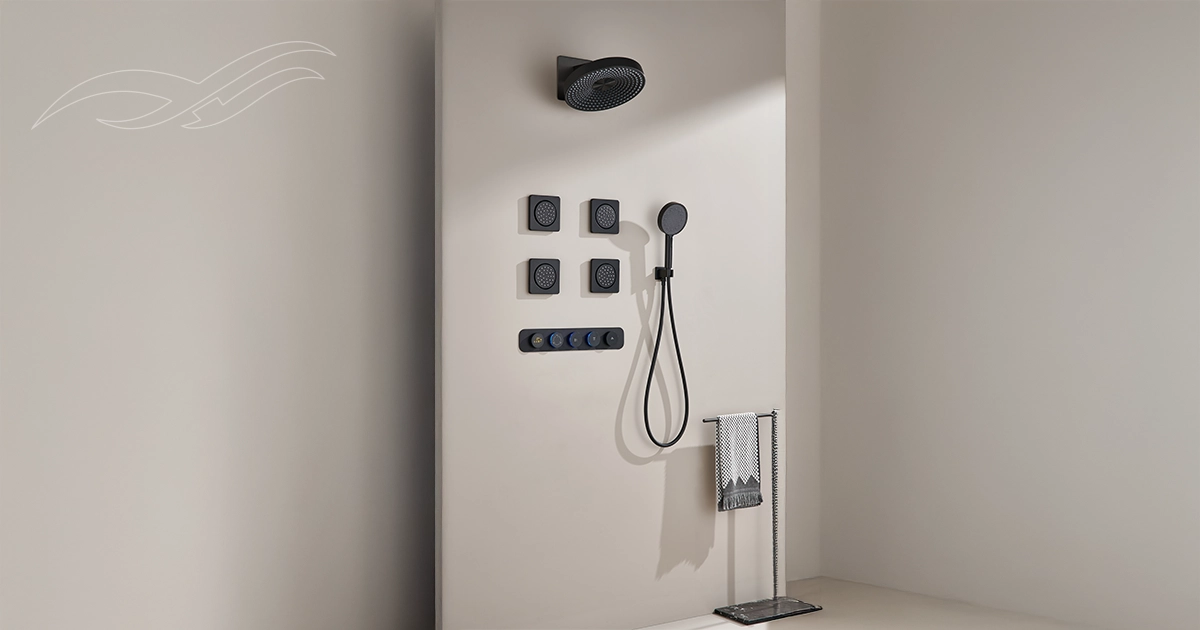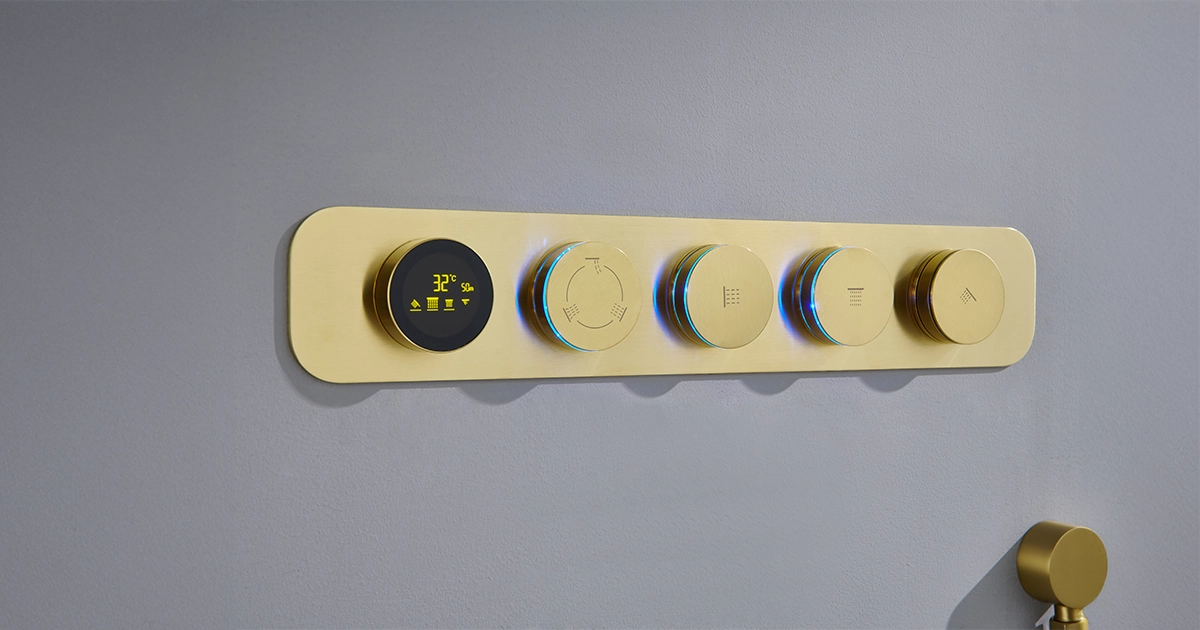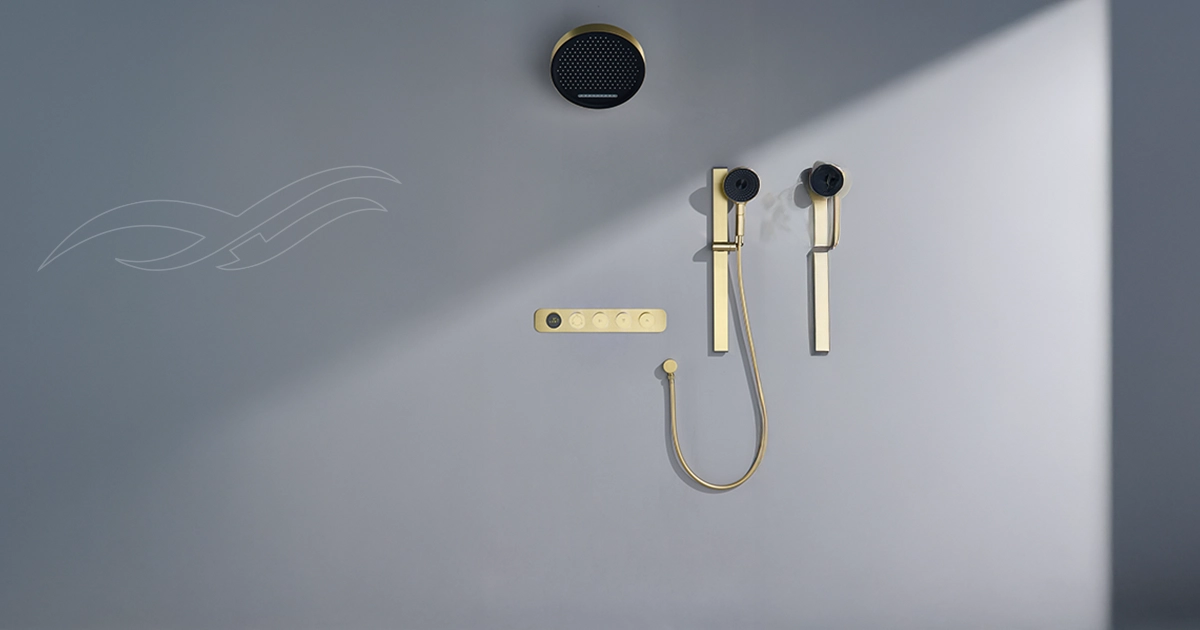Installing multiple valves for different bathroom faucets and showers can be a bit confusing and can make your bathroom look disorganised. For that, adding a bathroom diverter is the best option for you. It will make your bath space look stylish, and with just one click, you can enjoy an immersive bath experience.
A bathroom diverter is a small fitting and a convenient option to upgrade your shower experience. They let you control where the water flows, whether it’s your overhead shower, hand shower, tub spout, or body jets. In this blog, we’ll make it easy to understand what diverters are and how the different types — 3-way, 4-way, and 6-way bathroom diverters — work.
What is a Diverter?

A diverter is a simple device that allows you to make your shower experience easier and convenient. It helps you to direct water to different outlets in your bathroom. Instead of having separate knobs for every fixture, it acts like a central control switch.
For example:
Want to use the overhead shower? Just turn the diverter that way.
Prefer a hand shower? Switch it again.
Have a bathtub? The same diverter can send water there, too.
This makes your bathroom look cleaner, saves wall space, and gives you a more organised setup.
Types of Diverters

There are many types of diverters, and you can choose according to your bathing needs and the requirements of your bathroom fittings. Generally, there are the most common options: 3-way and 4-way. At Oyster Lifestyle, we understand your bathing needs, and for a more immersive bathing experience, we have a 6-way flow control valve as well.
Let’s have a look at each type in detail and their specific level of usage briefly:-
1. The 3-Way Diverter
A 3-way diverter is one of the most common choices for modern bathrooms. It connects to three outlets, usually:
Overhead shower
Hand shower
Spout (for bucket filling or bathtub)
Best for: Compact to medium-sized bathrooms with basic fittings.
Pros:
Easy to install and use.
Cost-effective compared to a larger water flow control valve.
Covers the needs of most families.
Cons:
Limited if you want multiple fancy shower fittings like body jets.
2. The 4-Way Diverter
The 4-way diverter is a step up. It can handle four outlets, which means you can add more variety to your shower. The usual outlets include:
Overhead shower
Hand shower
Spout
Body jets or a rain shower panel
Best for: Bathrooms that are slightly bigger or designed with more than three water points.
Pros:
More flexibility.
Perfect if you want that “luxury shower” feel at home.
Cons:
A bit more expensive than a 3-way water flow control switch.
Not always necessary for small bathrooms.
Further reading: Why Shower Panels Are the Smartest Bathroom Upgrade
3. The 6-Way Diverter
If you dream of turning your bathroom into a spa-like zone, a 6-way diverter is the answer. It can control six outlets, giving you complete freedom to enjoy multiple shower features. Here are a few outlets that are included in the 6-way water direction valve:
Overhead shower
Hand shower
Tub spout
Rain shower
Body jets
Cascade shower (or any other advanced feature)
Best for: Premium bathrooms, luxury homes, or anyone who wants a full spa experience at home.
Pros:
Maximum comfort and customisation.
Lets you enjoy different types of showers without separate controls.
Cons:
Costlier than a 3-way and 4-way water flow control switch.
Installation requires planning and enough bathroom space.
How to Choose the Right Diverter
Choosing the right type of bathroom diverter is very important. It is based on your bathroom fittings and setup. You can choose between a 3-way, 4-way, or 6-way diverter as per your bathroom outlets and setup as well. Here are a few pointers to decide which one will actually be the best choice for you. : –
1. Number of Fixtures
When picking the diverter for your bath space, you need to understand the number of bathroom fixtures you have. If you only have a hand shower, overhead shower, and spout → go for a 3-way diverter.
But if you are looking to add body jets or a rain shower to your bathroom, then in that case, you should choose a 4-way water flow regulator. So, if you have a luxurious bath setup with multiple features, a 6-way mixer valve is an ideal choice for you.
2. Bathroom Size
The size of the bathroom is another important factor to keep in mind when installing a bath diverter. If you have a small bathroom, you don’t usually need a 6-way diverter; rather, choose a 3-way only or a lesser one like 2-way or one-way, in that case. Larger bathrooms with dedicated shower enclosures can easily accommodate 4-way or 6-way options.
3. Budget
Look for your budget when picking the right bathroom diverter that suits your bathroom needs. A 3-way diverter is the most budget-friendly, while a 4-way mixer control sits in the mid-range. The 6-way flow regulator is for premium fittings.
But, if you are planning on future upgrades in your bathroom or adding more fixtures or multiple outlets, then choose accordingly.
Benefits of Using Diverters
Having a bathroom diverter can instantly upgrade your bathroom. There are many benefits of using a bathroom diverter. Let’s have a look:-
Space-Saving: One control instead of multiple knobs keeps walls clean and uncluttered.
Easy Control: Switch between outlets with a simple turn.
Modern Look: Sleek designs that blend well with luxury fittings.
Better Shower Experience: From basic needs to spa-like relaxation, diverters give you control over your water flow.
Discover more: Upgrade Your Shower with the Stylish Brook Series
With the Oyster lifestyle range of AGUA AI diverters, you can enjoy a more premium experience. It has multiple options, as it can help you enjoy the features of a water flow regulator and also has a thermostatic temperature controller to set the temperature according to your needs.

